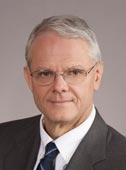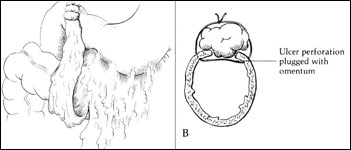CHAIR'S COLUMN
Roscoe Reid Graham
and Support of Surgical
Science

James Rutka
|
In 1959, Mrs. Beatrice Graham
established the Roscoe Reid
Graham Scholarship in Surgical
Science in the Department
of Surgery in memory of her
late husband, Dr. Roscoe Reid
Graham. Over the years, funds
from this scholarship have
enabled us to support the academic
activities of promising
young faculty members within
the first five years of their appointments. Most recently,
this scholarship is being used to support the careers of
Dr. Marcelo Cypel in the Division of Thoracic Surgery,
and Dr. Paul Karanicolas in the Division of General
Surgery, both of whom are performing at superior levels
in the research they are conducting. But who was Roscoe
Reid Graham? And why was the Department of Surgery
selected for this endowment fund?
Roscoe Reid Graham was born in Lobo Ontario on
January 2, 1890. He went to high school at London
Collegiate Institute in London, Ontario, before going
to medical school at the University of Toronto where
he graduated in 1910. He did an internship at St
Michael’s Hospital in 1912-13. Following time spent
at St. Bartholomew’s in London, United Kingdom,
he returned to Toronto and became a staff surgeon at
the Toronto General Hospital, and ultimately the first
Division Head of General Surgery. One of his early
remarkable achievements in surgery was to recognize and
successfully remove an insulinoma from the pancreas
in 1929. In 1932, Dr. Graham became a fellow of the
American Surgical Association (ASA). In 1937, he published
his highly cited work on the treatment of perforated
duodenal ulcers using an omental patch in Surgery,
Gynecology and Obstetrics to great acclaim.

© Reprinted with permission of The Society of Laparoendoscopic
Surgeons: Lagoo, Sandhya et al. “The Sixth Decision Regarding
Perforated Duodenal Ulcer.” JSLS : Journal of the Society of
Laparoendoscopic Surgeons 6.4 (2002): 359–368.
In 1939, Dr. Graham became Vice President of the
ASA with Dr. Allen Whipple as Chair. Other major
achievements include his working as editor of Annals
of Surgery, and writing the definitive work on operative
repair of massive rectal prolapse. Sadly, Dr. Graham died
unexpectedly during a skiing vacation in Canada from
acute coronary thrombosis. For those of you wishing to
learn more about Dr. Graham, I refer you to two timely
articles on his life and career (1, 2).
|
The Grahams’ children, Mary Allen and R. Barry
Graham, were co-trustees of the scholarship fund until
their passing in 2008. Mary Allen’s daughter Liz Rankin
(Roscoe Graham’s granddaughter) and her cousin Anne
McTaggart are now the co-trustees of the foundation.
Recently, they provided the Department of Surgery with
a fine portrait of Dr. Graham during his professional
career. We have now framed this portrait, and it hangs
proudly in the Department of Surgery office with the
following inscription: Dr. Roscoe Reid Graham, 1890-
1948, University of Toronto Pioneer in General Surgery. I
invite all of you to come view this portrait of one of our
outstanding faculty members whose life continues to
influence and shape the careers of our surgeons.
James T Rutka,
RS McLaughlin Chair, Department of Surgery
REFERENCES
1. Piper CC, Yeo CJ, Cowan SW, Roscoe Reid Graham
(1890-1948): A Canadian Pioneer in General Surgery. Am
Surg 2014; 80: 431-3
2. De la Fuente SG, Pappas TN, Roscoe Reid Graham
(1890-1948): The Man of the Patch. Curr Surg 2002; 28:
347-9
|